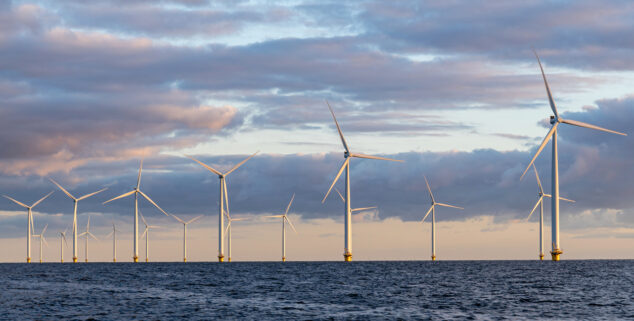Opinion
Getting offshore wind right means investing in science
 Offshore wind farm at sunset. Image by Bjoern Wylezich
Offshore wind farm at sunset. Image by Bjoern WylezichOPINION – With a recent vote by the California Public Utilities Commission to authorize purchase of up to 7.6 gigawatts of offshore wind energy, California is increasingly committed to a plan to pursue renewable energy offshore. The success of this endeavor hinges on a robust scientific understanding of the technology’s potential impacts. While research on similar technologies points to minimal or mitigatable impacts, we will not know the full effects until turbines are in the water.
Science, when done properly, can be a powerful platform for communities to come together in shared understanding, fostering informed discussion and decision-making. It can help address misinformation, which is already circulating in communities where offshore wind energy is planned, underscoring the urgency of accurate and trusted information. Well-executed scientific research can help predict what effects offshore wind developments may have on marine species and ecosystems, and, importantly, provide a roadmap for monitoring and mitigation to better understand and minimize these effects.
The state has taken steps to invest in science planning, with an initial award by the California Ocean Protection Council for the development of environmental monitoring guidance and the budget adopted by the Legislature and Governor appropriating an additional $3.6 million, a win in this lean budget year. In contrast, the investments in other offshore wind-related infrastructure are several orders of magnitude larger. For example, $475 million is allocated for offshore wind-related port development in the climate bond headed to voters this fall (Proposition 4) and another $426.7 million federal grant supports the Humboldt Bay Marine Terminal redevelopment for offshore wind. This funding undoubtedly meets critical needs, but more investment in science is also urgently needed, especially in this pre-construction planning and data gathering period. And when the projects launch, ongoing monitoring alone is likely to run into the tens of millions annually, investments that will pay dividends in understanding and mitigating potential environmental effects and create numerous well-paying jobs in California.
The state does not have to do it alone. For example, for more than 20 years, the California Ocean Science Trust, a 501(c)(3) created by state law, has leveraged public-private partnerships to support applied, solution-focused science. Drawing from California’s successful history of public-private partnerships to fund science–private philanthropy matched state investments to launch the Marine Life Protection Act in the 1990s, for example–a similar approach can be adapted for offshore wind. The scope of this endeavor requires collaboration across the scientific community. One progressive step in this direction is the newly formed Pacific Offshore Wind Consortium, a research collaborative including Cal Poly San Luis Obispo and Cal Poly Humboldt (see authors), along with Oregon State University. With an initial $1.6 million pledged from philanthropy and industry, this represents critical science capacity in the communities where offshore wind energy is slated for development.
It is imperative that all funders–industry, philanthropy, federal, and state–come together to align their priorities for research investment during this critical planning stage so that decision-making can be guided by evidence. Given the timeline set by the policy goals, we need to act swiftly to collect baseline environmental data before construction begins, develop adaptive management frameworks, establish transparent data stewardship processes, and build scientific capacity for the new blue economy.
Industry, which stands to gain financially, should provide a substantial portion of the funding. However, to support public trust, this science and research must be conducted without real or perceived conflicts of interest, likely requiring firewalls between research funders and implementers. Indigenous Knowledges must be recognized and thoughtfully woven with Western science approaches. Extensive, meaningful community engagement is essential, including working in good faith with communities in wind energy lease areas, the fishing industry, tribes, developers, and ports.
Regardless of individual opinion on the necessity of offshore wind energy development, there is widespread support for understanding and mitigating the potential environmental and community impacts, underscoring the urgency for increased investments in science and research. Doing offshore wind right requires thoughtful, public-private investment in science.
Dr. Arne Jacobson is the Director of the Schatz Energy Research Center and a professor in the School of Engineering at Cal Poly Humboldt. Dr. Ben Ruttenberg is an associate professor in the Biological Sciences Department and Director of the Center for Coastal Marine Sciences, which includes the Cal Poly Pier in Avila Beach and several research vessels.
Want to see more stories like this? Sign up for The Roundup, the free daily newsletter about California politics from the editors of Capitol Weekly. Stay up to date on the news you need to know.
Sign up below, then look for a confirmation email in your inbox.

Leave a Reply